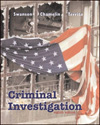The crime of arson has increased dramatically in recent years. It is created that than 1,000 lives are lost each year due to arson fires. Another 10,000 injuries are sustained each year as a result of arson fires. Conservative estimates show that approximately $2 billion in property damage is caused each year by arsonists. This $2 billion is the tip of the iceberg when it comes to the total amount of money lost as a result of arson. The cost of fire services increases by at least an additional $10 billion. Law enforcement spends additional time and money trying to bring arsonists to trial. The judicial system then must spend its time and many personnel hours on trying the cases. In the event of conviction, the penal system must house and feed the convicted arsonists. Even greater than the costs to government bodies are the costs to the person on the street. Untold thousands of jobs are lost when factories are burned for profit. Thousands of homes are lost each year, forcing homeowners and tenants to relocate and, generally, incur house and rent payments. Arson is an inherently difficult crime to detect and prosecute, in part, because the motivations for and methods of committing arson vary widely. While some arsonists may be troubled juveniles who start fires with matches or cigarettes, professional arsonists frequently utilize timing devices and accelerants. Arson investigation also falls between police responsibility and fire department responsibility, an area that is too often not effectively covered. Both the police and the fire services can legitimately claim authority in arson cases, but each also may rationalize that the responsibility belongs to the other. Unfortunately, in most jurisdictions neither is prepared to devote the resources needed to achieve identification, arrest, and conviction rates commensurate with other crimes. Arson investigators need cooperation and better training. Administrative officials need to help, but in order to help they need to give the problem a greater share of their attention. Probably the most urgent step in controlling arson rates is for top fire and police officials and local. state, and national governments to recognize the magnitude of the problem and then provide the necessary resources to combat it. |



 2002 McGraw-Hill Higher Education
2002 McGraw-Hill Higher Education